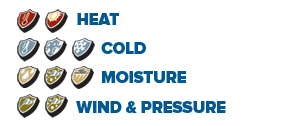REAPPORTIONING THE
ROOFING RETROFIT BUDGET
There is no expiry on most of the components of a roof system. Insulation that is kept dry will perform for an indefinite period of time. The waterproofing layer of the roofing system is generally the only component that requires cyclical replacement. Discarding the entire structure because part of it has reached the end of its service life is a costly and environmentally detrimental waste.
A sustainable roof system has been described as: 'a roofing system that is designed, constructed, maintained, rehabilitated and demolished with an emphasis throughout its life cycle on using natural resources effectively and preserving the global environment.'
To be characterized as sustainable, a roof should conserve energy, have an extended service life and reduce or eliminate waste. Roofs should be designed with consideration of the environmental impact of future retrofits. The good news is this can be done and implemented at a competitive price.
Take the example of a 20,000 square foot roof on an industrial building with an existing R-9 value in the roof and R-8 in the walls. A traditional roof retrofit would involve removing and discarding of up to 80,000 pounds of gravel, removing the old roof and sending it to a landfill, installing a new vapor barrier and R-9 insulation then sealing it with a tar based product. At the end of this retrofitted structure's life cycle, the whole process could presumably occur again - generating approximately 20 tons of waste for a roof this size.
In contrast, a more sustainable retrofit approach would first test the moisture damage of the old roof and, if feasible, use it as the vapor barrier for the retrofit. (However, roof overlays should not be installed on wet substrates.) With the money saved in this step, the owner could then upgrade to R-20 insulation. Recyclable waterproofing in place of tar-based product will also eliminate waste at the end of its life cycle when the next retrofit/replacement occurs.
The two approaches cost similarly, but the sustainable retrofit should also deliver energy savings with its upgraded insulation. Sustainable retrofits can now result in an average R-value of 22, which should greatly reduce the energy consumed for heating and cooling. A white reflective roof membrane should further boost savings.
Buildings account for 30% of energy use and 27% of greenhouse gas emissions in Canada. Meanwhile, few building systems have a shorter life span or are replaced as frequently as roofing systems, providing significant waste at the end of each service life.
Complete replacement is rarely ever the chosen option for other portions of the building envelope, and a shift in thinking is needed in roofing retrofit design. This will ultimately save energy, costs and landfill space.
(This article originally appeared in Canadian Property Magazine, April/May 2011)



